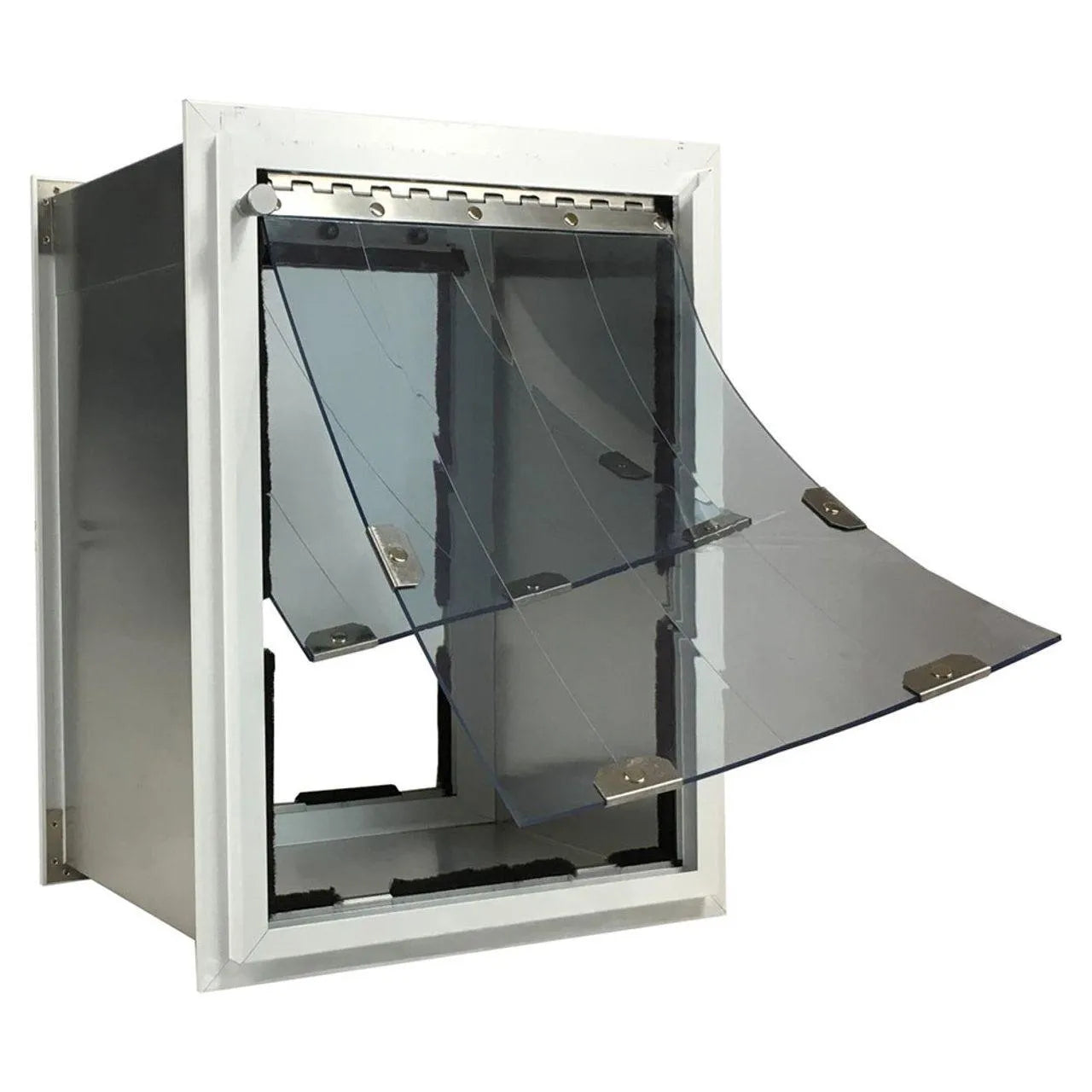If you are a dog owner, you understand the importance of providing a safe and comfortable space for your furry friend. And when it comes to outdoor time, a dog kennel can offer both the freedom your pet craves and the security you desire. Selecting the right size dog kennel is crucial—a seamless blend of ample space and a cozy environment will ensure that your dog thrives. In this extensive guide, we'll walk you through how to make the perfect choice for your canine companion.
The Importance of Outdoor Dog Kennels
In the modern world, outdoor kennels serve multiple purposes. They are not just about confinement but about providing a designated area for your dog to play, exercise, and relax safely. These kennels are used to maintain a structured routine, ensure that your dog doesn’t escape or get lost, while also allowing them to feel the sensations of the outdoors.
Indoor Use of Dog Kennels
While often associated with outdoor environments, dog kennels can be equally advantageous when used indoors. An indoor kennel can provide your pet with a space of their own within your home, offering a sense of security and routine. Kennels can act as a controlled environment during house training for puppies or for newly adopted dogs adjusting to a new space. They can also serve as a safe haven for dogs during noisy events or when unfamiliar guests visit. However, it's important to note that an indoor kennel should never be used for prolonged confinement. Always ensure your dog has sufficient time outside the kennel to play, exercise, and interact with the family.
Understanding Your Dog's Needs
Your furry friend's well-being is the key factor in the decision-making process. Knowing your dog's needs will help you choose a kennel that's more than just a fitting resting place.
Size and Breed Considerations
The size of your dog is a primary consideration. For instance, large-breed dogs such as Labrador Retrievers, German Shepherds, or Siberian Huskies would require pet kennels with substantially more space than a Chihuahua or Shih Tzu. The dog kennels should be large enough for your dog to stand, lie down, and move around comfortably.
Activity Level and Temperament
Is your dog a high-energy breed that needs ample space to run and play, or a mellow companion who will be content with a quiet corner to nap and people-watch? An energetic dog will need an outdoor dog kennel that allows for movement and activity, while a calm dog may enjoy a smaller, more intimate space. Additionally, your dog's temperament should also be taken into consideration. Some dogs may feel more secure in an enclosed kennel with a roof, while others may prefer an open-air kennel to take in the sights and smells of their surroundings.
Factors to Consider When Choosing a Dog Kennel
Beyond size, several key factors should influence your choice of an outdoor dog kennel. These factors ensure that the kennel serves its purpose effectively and tk kennels provides a safe environment for your pet.
Space Requirements
The general rule of thumb is to select a kennel that is five times the size of your dog. This allows for enough room to fit a bed, water bowl, and toys, while ensuring your pet has room to stretch their legs and move about freely.
Considering Your Dog's Future Growth
If you have a puppy or a young dog, it's essential to consider their potential growth when selecting a kennel. While they may fit comfortably in a smaller kennel now, they will likely outgrow it within a few months. It's better to get a larger kennel that will accommodate their growth and save you the hassle of having to replace it in the near future.
Security Features
A secure kennel is non-negotiable. Choose a kennel with sturdy construction, secure latches, and smooth edges that your dog can't chew through or get injured on. Make sure there are no gaps or weak points that could become escape routes for a clever or determined dog.
Durability and Materials
Your kennel should be able to withstand the elements as well as your dog’s energy. Materials such as galvanized steel, welded wire mesh, or chain link offer durability and protection. Avoid kennels with flimsy components that could pose a hazard to your dog.
Climate and Weather Considerations
If your dog will be spending time in the outdoor kennel, it's essential to consider the climate and weather conditions of your region. In hot or rainy areas, a kennel with proper ventilation and coverings for shade and protection from the elements is crucial. On the other hand, if you live in colder regions, an insulated kennel with a raised floor to keep your dog off the cold ground will be necessary.
Choosing the Right Size Kennel
Now that you have an understanding of your dog's needs, it's time to select the right size kennel. While there is no one-size-fits-all solution, here are some guidelines to help you make an informed decision.
Measuring Your Dog
To determine the appropriate size kennel for your dog, you'll need to get out your measuring tape. Measure your dog from nose to tail and add a few inches for comfort and movement. Then measure your dog's height from the ground to the top of their head or ears (whichever is taller) and again add a few inches. These measurements will give you a good idea of the minimum dimensions your dog's kennel should have.
Small Dog Kennels
For small breeds, the right outdoor kennel offers a secure, sheltered space. It's essential to provide protection from the weather no matter how temporary their stay in the enclosure might be.
Benefits and Considerations
Small kennels are typically easier to manage and require less space. They can be a perfect solution for a small yard or patio. However, it’s important to ensure that despite their size, the kennel should still provide enough room for your pet to move and stretch.
An ideal outdoor kennel for small dogs would typically have dimensions of 18 square feet or more. Height is also crucial; aim for a kennel that allows your dog to stand comfortably without stooping.
Medium Dog Kennels
Medium-sized dogs often require a bit more room to accommodate their active lifestyle. The right kennel will give them the freedom to move within a secure boundary.
Benefits and Considerations
A medium-sized kennel can offer the best of both worlds: space and manageability. It provides enough room for movement and play while remaining relatively easy to set up and maintain.
For medium-sized canines, a kennel with a floor space of 36 square feet or more is ideal. This should still be a minimum—always err on the side of more space if your yard allows for it.
Large Dog Kennels
Larger breeds and high-energy dogs truly benefit from the space provided by a sizable kennel. The right kennel will give them a sense of freedom while still within a secure boundary.
Benefits and Considerations
A large dog kennel can provide your pet with enough space to run, play, and even take a good, vigorous stretch. Consider this especially if your dog spends extended time in the kennel.
A generous kennel designed for large dogs should offer upwards of 72 square feet of floor space. The height is also vital, ensuring that your tall pet can move about without constraint.
Customizing Your Dog's Kennel
Personalizing your dog's outdoor space can make a significant difference in their comfort and enjoyment. Consider adding features that cater to their unique needs and preferences. Some options to consider include:
- A raised platform for lounging and sleeping
- An attached run or play area for extra exercise
- Shade cloth or tarps for added protection from the sun
- Toys, chews, and puzzle games to keep your dog mentally stimulated
Maintenance and Care Tips
A well-maintained dog kennel is a safe kennel. Regular cleaning and inspection will ensure that your dog's outdoor space is always a healthy and secure place. Here are some tips to help you maintain your dog's kennel:
- Clean up waste regularly and disinfect the kennel at least once a month.
- Check for any wear and tear, loose latches, or damaged areas that could potentially harm your dog.
- Trim any overhanging branches or plants near the kennel that could provide an escape route.
- Keep your dog's kennel well-ventilated and comfortable according to the weather.
- Replace any worn or damaged parts as soon as possible to maintain a secure and durable kennel for your pet.
Conclusion
Choosing the right size outdoor dog kennel is a decision that involves considering your dog’s size, breed, activity level, and temperament. Providing a safe and spacious kennel is one of the best things you can do as a pet owner to ensure your dog's well-being. Along with space, remember to factor in durability, customization options, and your dog's comfort. Happy pet, happy owner!
Remember, this is just a guide to get you started on your journey towards a thoughtful dog kennel purchase. Each dog is unique, and their needs may differ. By taking the time to consider these important factors, you'll be well on your way to creating the perfect outdoor space for your beloved pet.
*Boarding Recommended Kennel Sizing
|
Dog Weight |
Kennel Size (ft) |
|
Small Breeds |
3ft (width) by 4ft (length) |
|
Medium Breeds |
4ft (width) by 4ft (length) |
|
Large Breeds |
5ft (width) by 4ft (length) |
|
Giant Breeds |
5ft (width) by 6ft (length) |







